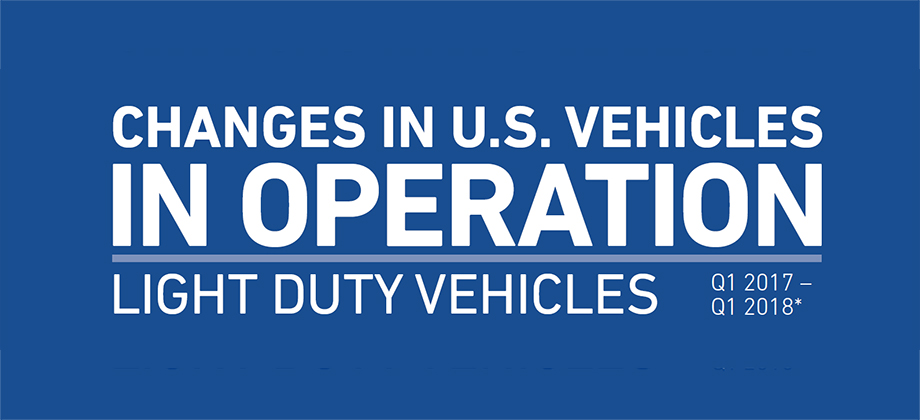Latest Posts

Consumer confidence is nearing an 18-year high. Unemployment figures are at record lows. Retail spend is healthy, and expected to stay that way through the back-to-school and holiday shopping booms. Translation for credit card issuers? The swiping and spending continue. In fact, credit card openings were up 4% in the first quarter of 2018 compared to the same time last year, and card utilization is hovering around 20.5%. Even with the Fed’s gradual 2018 rate hikes, consumers are shopping. In a new Mintel report, outstanding credit card debt is now $1.03 trillion (as of the end of Q1, 2018), and the number of consumers with credit cards is growing fastest among people aged 18 to 34. In the retail card arena specifically, boomers and Gen X’ers are leading the charge, opening 45% and 27% of new retails cards, respectively. “A stronger economy always bodes well for credit cards,” said Kelley Motley, director of analytics for Experian. “Now is the time for card issuers to zero in on their most loyal consumers and ensure they are treating them with the right offers, rewards and premium benefits.” Consumer data reveals the top incentives when selecting a rewards-based card includes cash back, gas rewards and retail cards (including travel rewards and airfare). In fact, for younger consumers, offering rewards has proven to be the most effective way to get them to switch from debit to credit cards. Cash back was the most preferred reward for consumers aged 18 to 44 when asked about their motivation to apply for a new card. For individuals 45 and older, 0% interest was the top motivator. Of course, beyond credit card opens, the ideal is to engage with the consumers who are utilizing the card the most. From a segmentation standpoint, the loyal retail cardholder has an average VantageScore® credit score of 671 with an average total balance of $1,633. They use the card regularly and consistently make payments. Finding more loyalists is the goal and can be achieved with informed segmentation insights and targeted prescreen campaigns. On the flip side, insights can inform card issuers with data, helping them to avoid wasting marketing dollars on consumers who merely want to game a quick credit card offer and then close an account. A batch and blast marketing approach no longer works in the credit card marketing game. “Consumers expect you to know them and their financial needs,” said Paul DeSaulniers, senior director of Experian’s segmentation solutions. “The data exists and tells you exactly who to target and how to structure the offer – you just need to execute.”

Consumer credit scores A recent survey* released by the Consumer Federation of America and VantageScore Solutions, LLC, shows that potential borrowers are more likely to have obtained their credit score than nonborrowers. 70% of those intending to take out a consumer or mortgage loan in the next year received their credit score in the past year, compared with 57% of those not planning to borrow. Consumers who obtained at least one credit score in the past year were more likely to say their knowledge of scores is good or excellent compared with those who haven’t (68% versus 45%). While progress is being made, there’s still a lot of room for improvement. By educating consumers, lenders can strengthen consumer relationships and reduce loss rates. It’s a win-win for consumers and financial institutions. Credit education for your customers>

Keeping your customers happy is critical to success. And while reducing fraud is imperative, it shouldn’t detract from a positive customer experience. Here are 3 fraud detection and prevention strategies that can help you reduce fraud and protect (and retain) customers. Use customer-centric strategies — Recognizing legitimate customers online is more important than ever, particularly since the web’s built-in anonymity makes it a breeding ground for scammers and fraudsters. Balance fraud prevention and the customer experience — When implementing security protocols, consider consumers’ fluctuating and potentially diminishing tolerance levels for security protocols. Embrace new fraud protection technologies — Multilayered approaches should include data-driven, artificial intelligence–powered systems that will recognize customers while keeping their transactions stress-free. Fraud prevention shouldn’t discourage honest customers from buying, but it should instill confidence and strengthen the customer relationship. Learn more>

Believe it or not, 66% of consumers want to see some visible signs of security and barriers when accessing their accounts so they can be sure that a transaction is more secure. Other takeaways from our 2018 Global Fraud and Identity Report: Nearly 3/4 of surveyed businesses cite fraud as growing over the past 12 months. 30% of surveyed businesses are experiencing more fraud losses year-over-year. While 83% of businesses believe that their fraud solutions are scalable, cost is the biggest obstacle to adopting new tactics. There’s a delicate balance in delivering a digital experience that instills confidence while allowing for easy and convenient account access. It’s not easy to deliver both — but it is possible.

Business guide to new markets Competition is fierce. Expectations are high. Navigating a new market can be profitable — if managed strategically. Consider these actionable insights when entering a new market: Use historical data to identify the right target population. Identify, access and leverage the right data to gain the insights you need to make sound decisions. Consider insights from a seasoned professional for a bigger, more accurate picture of the market. Entering a new market isn’t without some risk. But with the right data, strategies and expertise, you can navigate new markets, reduce risk and start making profitable decisions. Learn more>

Customer Identification Program (CIP) solution through CrossCore® Every day, I work closely with clients to reduce the negative side effects of fraud prevention. I hear the need for lower false-positive rates; maximum fraud detection in populations; and simple, streamlined verification processes. Lately, more conversations have turned toward ID verification needs for Customer Information Program (CIP) administration. As it turns out, barriers to growth, high customer friction and high costs dominate the CIP landscape. While the marketplace struggles to manage the impact of fraud prevention, CIP routinely disrupts more than 10 percent of new customer acquisitions. Internally at Experian, we talk about this as the biggest ID problem our customers aren’t solving. Think about this: The fight for business in the CIP space quickly turned to price, and price was defined by unit cost. But what’s the real cost? One of the dominant CIP solutions uses a series of hyperlinks to connect identity data. Every click is a new charge. Their website invites users to dig into the data — manually. Users keep digging, and they keep paying. And the challenges don’t stop there. Consider the data sources used for these solutions. The winners of the price fight built CIP solutions around credit bureau header data. What does that do for growth? If the identity wasn’t sufficiently verified when a credit report was pulled, does it make sense to go back to the same data source? Keep digging. Cha-ching, cha-ching. Right about now, you might be feeling like there’s some sleight of hand going on. The true cost of CIP administration is much more than a single unit price. It’s many units, manual effort, recycled data and frustrated customers — and it impacts far more clients than fraud prevention. CIP needs have moved far beyond the demand for a low-cost solution. We’re thrilled to be leading the move toward more robust data and decision capabilities to CIP through CrossCore®. With its open architecture and flexible decision structure, our CrossCore platform enables access to a diverse and robust set of data sources to meet these needs. CrossCore unites Experian data, client data and a growing list of available partner data to deliver an intelligent and cost-conscious approach to managing fraud and identity challenges. The next step will unify CIP administration, fraud analytics and a range of verification treatment options together on the CrossCore platform as well. Spoiler alert. We’ve already taken that step.

Trivia question: Millennials don’t purchase new vehicles. True or False?

When it comes to driving the automotive industry forward, Experian Automotive has a motto: “The right cars. The right customers. The right data to know the difference.” We deliver an integrated perspective based on the highest quality automotive information and market intelligence. Data is important to us, and we have the most robust combination of data assets under one roof. The North American Vehicle Database℠, File One℠ Credit Database, Consumer View℠ Marketing Database, Online Activity Databases, and National Fraud Database℠ all fed into Experian’s Auto HyperConnect™. Auto HyperConnect houses two different solutions: Auto HyperTargeting™ and Auto HyperMonitoring™. There are four different components to Auto HyperTargeting, and the one we will focus on today is Expired Lease. Dealers have found success marketing to their own customers when vehicle leases come due. The challenge has been conquesting off-lease consumers who didn’t buy from them. While off-lease consumer marketing lists are available, they only provide the estimated lease end date and monthly lease payment. When restricted to this data, it’s hard to tell if a $550 a month payment is for a Ford F150 or a BMW 3-series. And yet this is exactly the level of detail needed to successfully target off-lease marketing. Experian’s new Auto HyperTargeting- Expired Lease addresses this challenge by enabling dealers to identify and engage off-lease audiences through a highly targeted approach that has never been possible! Now, finding customers is much easier and cost-effective. You can use the best mix of selection criteria to maximize your off-lease conquesting strategy. Some of the ways you can identify your audience are: Lease Maturity Date Vehicle Make Vehicle Model Zip Code Model Performance Tier Distance from Dealer Ship Vehicle Status (New or Used) Signing up for Auto HyperTargeting- Expired Lease comes with five perks. The first is a monthly file. This includes name and address, lease maturity date, make/model, monthly payment bands, and phone and email address when available. The second is the ability to make sign up for a subscription monthly payments. Third is marketing flexibility with direct mail, email, and phone. Four there is no firm offer of credit required for this. Finally, a quarterly sales report. ARA reports provide sales metrics industry wide for your targets. Other competitive features also available in Auto HyperTargeting- Expired Lease is the customers full contact information with name, address, email address and phone number. And for online and offline channels, you can select a specific audience that is customizable. Auto HyperTargeting has some amazing features to successfully conquest customers, and Expired Lease is one of the four ways to do this. Stay tuned for Auto HyperTargeting- Vehicle Owners coming up next!

As more financial institutions express interest and leverage alternative credit data sources to decision and assess consumers, lenders want to be assured of how they can best utilize this data source and maintain compliance. Experian recently interviewed Philip Bohi, Vice President for Compliance Education for the American Financial Services Association (AFSA), to learn more about his perspective on this topic, as well as to gain insights on what lenders should consider as they dive into the world of alternative credit data. Alternative data continues to be a hot topic in the financial services space. How have you seen it evolve over the past few years? It’s hard to pinpoint where it began, but it has been interesting to observe how technology firms and people have changed our perceptions of the value and use of data in recent years. Earlier, a company’s data was just the information needed to conduct business. It seems like people are waking up to the realization that their business data can be useful internally, as well as to others. And we have come to understand how previously disregarded data can be profoundly valuable. These insights provide a lot of new opportunities, but also new questions. I would also say that the scope of alternative credit data use has changed. A few years ago, alternative credit data was a tool to largely address the thin- and no-file consumer. More recently, we’ve seen it can provide a lift across the credit spectrum. We recently conducted a survey with lenders and 23% of respondents cited “complying with laws and regulations” as the top barrier to utilizing alternative data. Why do you think this is the case? What are the top concerns you hear from lenders as it relates to compliance on this topic? The consumer finance industry is very focused on compliance, because failure to maintain compliance can kill a business, either directly through fines and expenses, or through reputation damage. Concerns about alternative data come from a lack of familiarity. There is uncertainty about acquiring the data, using the data, safeguarding the data, selling the data, etc. Companies want to feel confident that they know where the limits are in creating, acquiring, using, storing and selling data. Alternative data is a broad term. When it comes to utilizing it for making a credit decision, what types of alternative data can actually be used? Currently the scope is somewhat limited. I would describe the alternative data elements as being analogous to traditional credit data. Alternative data includes rent payments, utility payments, cell phone payments, bank deposits, and similar records. These provide important insights into whether a given consumer is keeping up with financial obligations. And most importantly, we are seeing that the particular types of obligations reflected in alternative data reflect the spending habits of people whose traditional credit files are thin or non-existent. This is a good thing, as alternative data captures consumers who are paying their bills consistently earlier than traditional data does. Serving those customers is a great opportunity. If a lender wants to begin utilizing alternative credit data, what must they know from a compliance standpoint? I would begin with considering what the lender’s goal is and letting that guide how it will explore using alternative data. For some companies, accessing credit scores that include some degree of alternative data along with traditional data elements is enough. Just doing that provides a good business benefit without introducing a lot of additional risk as compared to using traditional credit score information. If the company wants to start leveraging its own customer data for its own purposes, or making it available to third parties, that becomes complex very quickly. A company can find itself subject to all the regulatory burdens of a credit-reporting agency very quickly. In any case, the entire lifecycle of the data has to be considered, along with how the data will be protected when the data is “at rest,” “in use,” or “in transit.” Alternative data used for credit assessment should additionally be FCRA-compliant. How do you see alternative credit data evolving in the future? I cannot predict where it will go, but the unfettered potential is dizzying. Think about how DNA-based genealogy has taken off, telling folks they have family members they did not know and providing information to solve old crimes. I think we need to carefully balance personal privacy and prudent uses of customer data. There is also another issue with wide-ranging uses of new data. I contend it takes time to discern whether an element of data is accurately predictive. Consider for a moment a person’s utility bills. If electricity usage in a household goes down when the bills in the neighborhood are going up, what does that tell us? Does it mean the family is under some financial strain and using the air conditioning less? Or does it tell us they had solar panels installed? Or they’ve been on vacation? Figuring out what a particular piece of data means about someone’s circumstances can be difficult. About Philip Bohi Philip joined AFSA in 2017 as Vice President, Compliance Education. He is responsible for providing strategic direction and leadership for the Association’s compliance activities, including AFSA University, and is the staff liaison to the Operations and Regulatory Compliance Committee and Technology Task Forces. He brings significant consumer finance legal and compliance experience to AFSA, having served as in-house counsel at Toyota Motor Credit Corporation and Fannie Mae. At those companies, Philip worked closely with compliance staff supporting technology projects, legislative tracking, and vendor management. His private practice included work on manufactured housing, residential mortgage compliance, and consumer finance matters at McGlinchey Stafford, PLLC and Lotstein Buckman, LLP. He is a member of the Virginia State Bar and the District of Columbia Bar. Learn more about the array of alternative credit data sources available to financial institutions.

In our previous post, we talked about Experian’s 2018 Attribution Study. This study is a wide-ranging, dealer-focused sales-driven attribution study to answer the question of what drives sales. Three takeaways were formed and the first was looking at shopper behavior instead of isolated KPIs. Now, we look at the second and third takeaways. Optimize your paid advertising Paid search is an important part of dealership marketing and precise targeting will help with both traffic and purchasing rate. Branded search drives quality traffic to websites. 7% of all traffic and 12% of HVU traffic comes from branded search. Along with traffic, the purchase rate was found to be 54% higher than average. In terms of value, New Make and Model has impressive results. 2% of all traffic and 12% of HVU traffic comes from New Make and Model. The purchase rate is 137% higher than average. Of note, we found that in order to optimize paid search to drive sales, you must buy your own name. 100% of dealers studied had buyers via branded search. With that, optimized “New Make Model” campaigns are crucial. 82% of dealers had buyers come through Make Model keywords. Traditionally, New Make Model would just create a higher funnel but since we are in the digital age, this does not happen anymore. Some participating dealers spent <20% of search budget on New Make Model campaigns. A key point is that no dealer had buyers come through via competitors’ keywords. As for a dealer’s website, display leasing offers and content for buyers since many search queries contained lease keywords. Although paid search is important, there are other channels to optimize and segmentation is key. This study found that conquesting with bulk email-blasts is not effective. You can achieve better email marketing results by targeting shoppers more intelligently and using quality lists. CRM-driven loyalty campaigns performed well in this segment. Display campaigns revealed that social media is no longer just for posting content but paid social advertising campaigns were effective. In fact, this study found Facebook display to be more effective than Google and other display networks. The reason is it is easier to segment and target a specific audience through Facebook. Google is more difficult to segment and has too many set-it-and-forget-it campaigns. Evaluate your third-party investments This brings us to third-parties, such as Automotive Shopping Portals and other lead providers. Performance with third-parties can vary and dealers should evaluate third-party performance as it relates to your sales. The third-party buy rate was under-indexed for dealers versus all sales. The business model for third-parties is not focused on driving traffic to dealer sites. Since there are so many vehicles listed on third-party sites from franchises, independent dealers, and private parties, there is a lot of “noise” for customers to sift through. For dealers, finding out what drives sales has led to Experian's 2018 Attribution. Our wide-ranging, dealer focused sales-driven attribution study focused on key variables and delivers three recommendations: Focus on website shopper behavioral metrics to drive sales. optimize paid search, specifically branded search and new make model campaigns. and evaluate third-party performance as it relates to your sales. With these, a dealer can be more confidant with their marketing and their data.

When developing a risk model, validation is an essential step in evaluating and verifying a model’s predictive performance. There are two types of data samples that can be used to validate a model. In-time validation or holdout sample: Random partitioning of the development sample is used to separate the data into a sample set for development and another set aside for validation. Out-of-time validation sample: Data from an entirely different period or customer campaign is used to determine the model’s performance. We live in a complicated world. Models can help reduce that complexity. Understanding a model’s predictive ability prior to implementation is critical to reducing risk and growing your bottom line. Learn more

As I mentioned in my previous blog, model validation is an essential step in evaluating a recently developed predictive model’s performance before finalizing and proceeding with implementation. An in-time validation sample is created to set aside a portion of the total model development sample so the predictive accuracy can be measured on a data sample not used to develop the model. However, if few records in the target performance group are available, splitting the total model development sample into the development and in-time validation samples will leave too few records in the target group for use during model development. An alternative approach to generating a validation sample is to use a resampling technique. There are many different types and variations of resampling methods. This blog will address a few common techniques. Jackknife technique — An iterative process whereby an observation is removed from each subsequent sample generation. So if there are N number of observations in the data, jackknifing calculates the model estimates on N - 1 different samples, with each sample having N - 1 observations. The model then is applied to each sample, and an average of the model predictions across all samples is derived to generate an overall measure of model performance and prediction accuracy. The jackknife technique can be broadened to a group of observations removed from each subsequent sample generation while giving equal opportunity for inclusion and exclusion to each observation in the data set. K-fold cross-validation — Generates multiple validation data sets from the holdout sample created for the model validation exercise, i.e., the holdout data is split into K subsets. The model then is applied to the K validation subsets, with each subset held out during the iterative process as the validation set while the model scores the remaining K-1 subsets. Again, an average of the predictions across the multiple validation samples is used to create an overall measure of model performance and prediction accuracy. Bootstrap technique — Generates subsets from the full model development data sample, with replacement, producing multiple samples generally of equal size. Thus, with a total sample size of N, this technique generates N random samples such that a single observation can be present in multiple subsets while another observation may not be present in any of the generated subsets. The generated samples are combined into a simulated larger data sample that then can be split into a development and an in-time, or holdout, validation sample. Before selecting a resampling technique, it’s important to check and verify data assumptions for each technique against the data sample selected for your model development, as some resampling techniques are more sensitive than others to violations of data assumptions. Learn more about how Experian Decision Analytics can help you with your custom model development.

There’s no question today’s consumers have high expectations. As financial services companies wrestle with the laws and consumer demands, here are a few points to consider: While digital delivery channels may be new, the underlying credit product remains the same. With digital delivery, adhere to credit regulations, but build in enhanced policies and technological protocols. Consult your legal, risk and compliance teams regularly. Embrace the multitude of delivery methods, including email, text, digital display and beyond. When using the latest technology, you need to work with the right partners. They can help you respect the data and consumer privacy laws, which is the foundation on which strategies should be built. Learn more

There are many factors attributing to the success of dealerships. When it comes to dealers, empirical guidance is a great way to study effective advertising. Experian brought Auto, Targeting, and the Dealer Positioning System capabilities together in a nationwide study to answer the ultimate question: what drives sales? The answers can be found in Experian’s 2018 Attribution Study. This is a wide-ranging, dealer-focused sales-driven attribution study that analyzed a few key variables. We deployed 187,701 tracking pixels to devices in 41,012 distinct households, focused on 15 digital metrics to learn about shopper behavior, and tied that digital shopping data to 2,436 vehicle sales. An industry first, Experian’s ability to combine automotive registration data, sales data, and website analytics and online behavior data puts us in a position to do something that very few companies can do. We use the household identifiers to not only see who bought a car and who bought specifically from a participating dealer, but also how they shopped the dealer’s site. Our ability to accurately identify a household’s digital behavior is based on the fact that we are a source compiler of the data and have it sitting under one roof. Others that attempt to provide this type of insight need to contract out for registrations, sales data imports from the dealership, website analytics, household identifiers, or all the above, which generally adds time to the insights. Using our sales-based approach, we can deliver unbiased attribution. Sales-based attribution is attributing credit to different advertising sources/campaigns based on actual vehicle sales – including those targeted consumers that may have purchased outside of the dealership. This is the Holy Grail of attribution for car dealers since it ties an offline activity such as buying a car back to the online advertising that’s taking up most their budgets every month. Because of that offline-online disconnect, sales-based attribution is difficult. Other automotive attribution models are typically focused on website conversions or website behavior – “what advertising can I attribute website leads to” (conversions) or “what advertising is driving users who follow the behavior that I think shows they’re likely to buy from my dealership” (website behavior.) What are the takeaways? We found three takeaways from our study. First off, we look at shopper behavior instead of isolating KPIs. Later we will discuss how traditional website metrics do not tie-in to sales. Second, we look at optimizing your paid advertising. Finally, we look at third-party investments. Although third parties drive sales, they may not be your sales. Looking at shopper behavior, not isolated KPI’s Traditional website metrics don’t tell the sales story for dealers. Traditional conversion stats are equal for buyers vs. all traffic such as VDPs or page views What this means is on average, buyers converted at a lower rate than overall website traffic. Looking solely at form submissions, hours and directions pageviews, and mobile clicks-to-call, don’t give the best view of what advertising is driving sales. With that, 98% of buyer traffic never submitted a form or went to the hours and directions page. This is a typical website conversion that dealers, vendors, and advertising agencies focus on. Since traditional web metrics don’t tell the story, there is another way. These are called High-Value Users, or HVU. They purchase at a 34% higher rate than overall traffic although they make up 11% of all traffic. High-Value Users are an Experian derived KPI. What makes someone an HVU are four different measurements. They must visit a website at least three times Spend at least six minutes on the site in total View at least eight pages in total View at least one VDP High-Value Users correlates to sales better than Vehicle Detail Page or VDP metrics. In this study, the correlation for VDP was measured at .595 which is rated a medium correlation. Meanwhile, HVU scored a .698 which is rated a high correlation. Looking at many different behavioral KPIs, like we do with our High-Value User (HVU) metric, correlates better to sales than just looking at how many VDPs you had. Driving more VDPs won’t necessarily help sales. But driving more HVUs is more likely to correlate with more sales. This also gets back to the attribution discussion above: Experian sales-based attribution is the best, and Experian’s HVUs are a good method for web-based attribution. From this attribution study, High-Value Users are a vital group for dealers to utilize. In our next post, we will go over the second and third takeaways from the attribution study: optimizing paid advertising and evaluating third-party investments.
